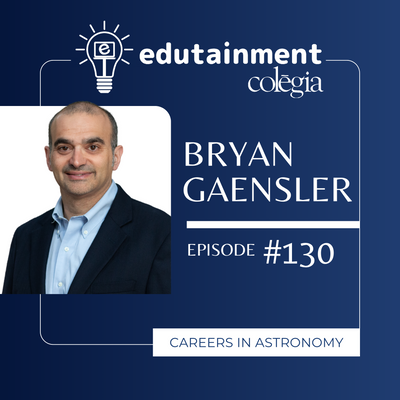
Bryan Malcolm Gaensler is an Australian astronomer based at the University of California, Santa Cruz. He studies magnetars, supernova remnants, and magnetic fields.
📘 Common Core Standards Touched On
🔹 Reading Informational Text (Grades 6–12)
-
CCSS.ELA-LITERACY.RI.6-12.1
Cite strong and thorough textual evidence to support analysis of what the text says explicitly and inferences drawn from it.
→ Analyze Dr. Gaensler’s explanations of supernovae, data interpretation, and patience in science. -
CCSS.ELA-LITERACY.RI.6-12.2
Determine a central idea and analyze its development over the course of the text.
→ Themes: curiosity-driven research, persistence in the face of difficulty, and scientific discovery. -
CCSS.ELA-LITERACY.RI.6-12.3
Analyze how individuals or ideas are introduced, illustrated, and elaborated.
→ Trace Dr. Gaensler’s personal and professional journey, and how his mindset shaped his career.
🔹 Writing Standards (Grades 6–12)
-
CCSS.ELA-LITERACY.W.6-12.2
Write informative/explanatory texts to examine and convey complex ideas clearly.
→ Write essays or summaries explaining a magnetar or the nature of scientific research using Gaensler’s descriptions. -
CCSS.ELA-LITERACY.W.6-12.4
Produce clear and coherent writing appropriate to task, purpose, and audience.
→ Students articulate a reflection or report on space phenomena, or a personal response to advice given by Gaensler.
🔹 Speaking and Listening (Grades 6–12)
-
CCSS.ELA-LITERACY.SL.6-12.1
Engage effectively in collaborative discussions with diverse partners.
→ Classroom dialogue around light years, scientific patience, or the role of coding in modern science. -
CCSS.ELA-LITERACY.SL.6-12.4
Present information and supporting evidence clearly and logically.
→ Presentations on scientific phenomena, Gaensler’s discoveries, or data visualization techniques.
🔹 Literacy in Science and Technical Subjects (Grades 6–12)
-
CCSS.ELA-LITERACY.RST.6-12.3
Follow precisely a multistep procedure when carrying out experiments, taking measurements, or performing technical tasks.
→ Applies to interpreting Gaensler’s process for analyzing astronomical data from telescopes. -
CCSS.ELA-LITERACY.RST.6-12.7
Integrate and evaluate multiple sources of information presented in diverse formats.
→ Students combine transcript content with visual representations of space to grasp scale and phenomena. -
CCSS.ELA-LITERACY.RST.6-12.9
Synthesize information from a range of sources into a coherent understanding of a process or concept.
→ Investigate how scientists confirm and visualize deep-space phenomena like magnetar flares.
🎓 Applicable Grade Levels
| Grade Level | Application Focus |
|---|---|
| Grade 6–8 | Spark interest in space science, encourage curiosity and perseverance, connect astronomy with digital skills. |
| Grade 9–10 | Analyze scientific texts, build argumentative or informative writing based on discoveries and theories. |
| Grade 11–12 | Prepare for STEM careers, synthesize data interpretation with personal reflection, explore advanced topics like light travel and coding for science. |






